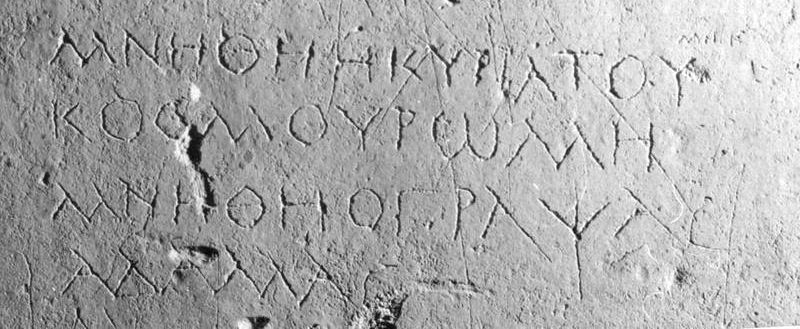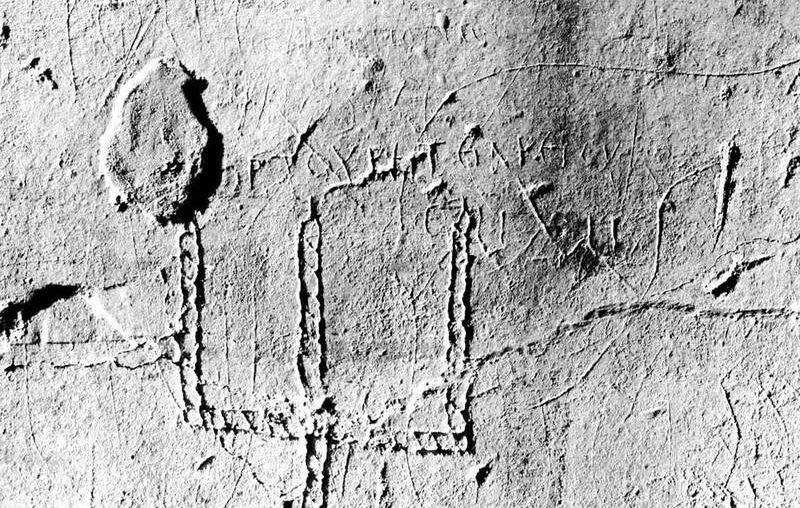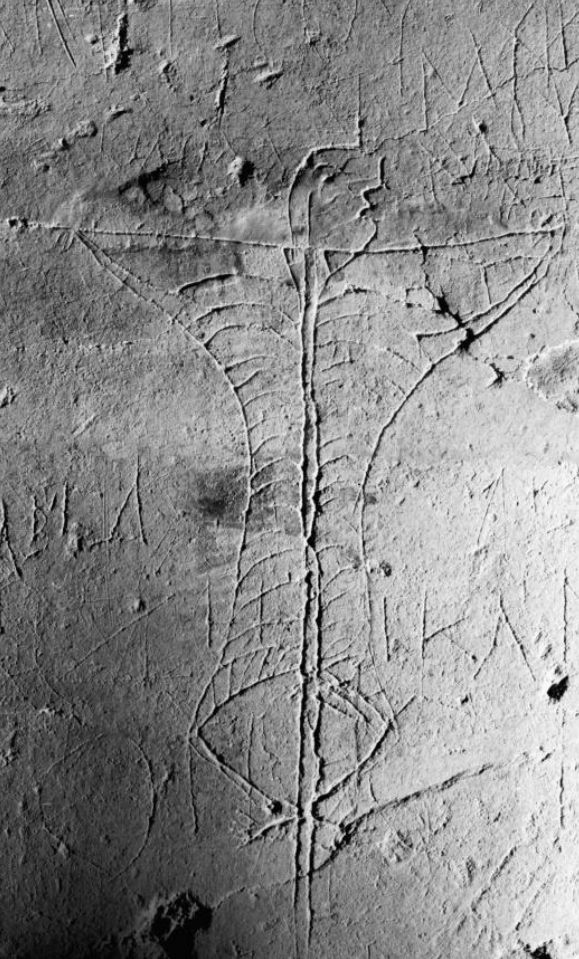In 1959 a row of eight rooms was unearthed between Corso Nicola Terracciano and Via Giambattista Pergolesi, one of which contained many graffiti ("taberna 5"). The function of the rooms is not clear. They were built in the first century AD, perhaps during the reign of Nero. Around 150 AD they were reinforced, because of damage caused by seismic activity. In the Antonine period the room with the graffiti was closed off. The paintings with the graffiti have been dated to the Trajanic-Hadrianic period.
The room with the graffiti. Photo: Camodeca 2018, p. 205.Greek graffiti claim that the people of certain cities are "the first", and that we should think of ("remember") certain cities. Most of the cities are in Asia Minor: the people of the golden city of Pergamon, of Laodicea, of Lycia, and of Mopsueste at the river Pyramos. The little-known Antanoi in Macedonia are recorded, and the city of Canopus in Egypt. Two Greek graffiti state that Rome is truly the mistress of the world.

Μνηθῇ ἡ κυρία τοῦ
κόσμου Ῥώμη,
μνηθῇ ὁ γράψας
Ἀδάμας
EDR164945.
Photo: EDR.Latin graffiti are also present. One mentions Cumae, another calls Rome a golden city (Roma chrysopolis). Yet another wishes those from Ravenna all the best (omnibus Ravennatibus feliciter bis), probably meant for the military fleet stationed in that city. Some names were recorded in Latin (P. Matius Rufus, C. Valerius Mus, C. Iulius Victor), including a (descendant of a) freedman of Trajan, Marcus Ulpius Apo[---].
A quote from the poet Tibullus is a reference to Egypt: barbara Memphitam plang[---].
Nile pater, quanam possim te dicere causa
Aut quibus in terris occuluisse caput?
Te propter nullos tellus tua postulat imbres,
Arida nec pluvio supplicat herba Iovi.
Te canit atque suum pubes miratur Osirim
Barbara, Memphiten plangere docta bovem.For what cause, Father Nile, or in what lands
may I declare that thou hast hid thy head?
Because of thee thy Egypt never sues for showers,
nor does the parched blade bow to Jove the Rain-giver.
Thou art sung and worshipped, as their own Osiris,
by the barbarous folk brought up to wail the ox of Memphis.Tibullus, Elegies 1,7,23-28. Translation J.P. Postgate. There are also many drawings: a female dancer holding torches, Panes (the deity; or gladiators?), a water organ, ships (including a military oared ship and a cargo ship), perhaps a mummy, and caricatures.
Drawings: Langner 2001. A Greek graffito mentions a retiarius, a lightly armoured gladiator, equipped with a net, a dagger and a trident. It is combined with a drawing of a trident. There is a large drawing of a crucified person, with the name Alkimila (Alcimilla) nearby.[1]

Graffito of a
retiarius and trident.
[---]ορτου ῥητειαρείου
above the trident.
EDR169186.
Photo: EDR.

Graffito of a crucified person.
Ἀλκίμιλα is written top left.
EDR178207. H. 0.35.
Photo: Camodeca 2018, p. 207.There was a strong presence in Puteoli of people from the eastern half of the Empire, and it comes as no surprise that an honorary inscription was set up by the mercatores qui Alexandriai, Asiai, Syriai negotiantur, merchants doing business with Alexandria, Asia and Syria (EDR129292). But when it comes to the Latin-speaking west, the silence is deafening.
Movie of the room with the graffiti. YouTube, MrAntonioXC.
[1] The texts can be looked up in EDR, search for "Urbs antiqua": Puteoli, "Locus inventionis": terracciano, "Rei materia": tectorium. The drawings are in Langner 2001, search for "Ort / Anbringung": pergolesi.